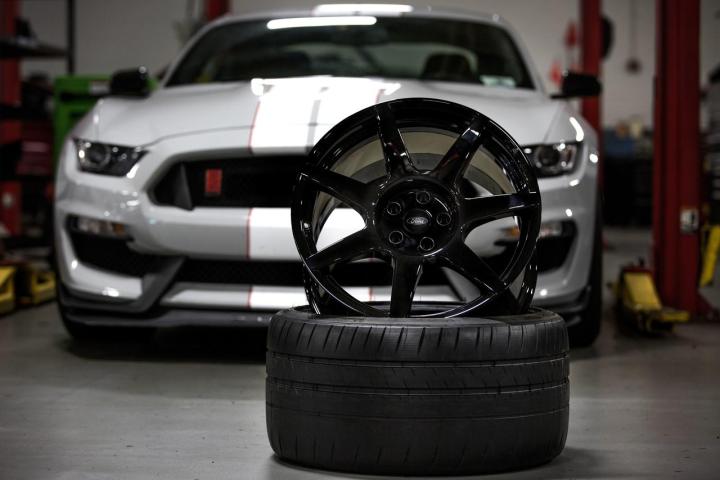
The Ford Shelby GT350R Mustang, the most track-capable Mustang ever, is the first car from a major automaker to equip carbon fiber wheels as standard. The lightweight material has been used on body panels, trim pieces, spoilers, and even engine components for years, and although carbon fiber wheels have been produced before, it’s never been at this high of a volume.
Any economics professor or Costco greeter will tell you it’s better to buy in bulk. A set of carbon rims could set you back as much as $15,000 in the aftermarket world, but each of the 37 GT350Rs produced will reportedly cost $62,195. Considering the car’s credentials — a 520-horsepower flat-plane crank V8, adaptive suspension dampers, low weight, awesome looks — that seems like a pretty sweet deal.
To craft the seven-spoke standouts, Ford and Australian supplier Carbon Revolution turned to the most logical place for inspiration: outer space. It’s wasn’t alien weaponry they were after though, rather a manufacturing process called “ceramic plasma arc spray,” one that was used on the original space shuttle’s main engine turbine blades.

The technique involves using a plasma arc gun to liquify ceramic material, which then coats the wheels in an incredibly thin, incredibly hard, and incredibly lightweight shield. It’s extremely efficient at providing thermal protection from brake heat, but the benefits are plentiful. Ford says that due to carbon fiber’s natural damping properties, prototype wheels showed improved suspension response times, chassis dynamics, steering feel, and ride quality during testing.
Obviously the biggest advantage to carbon fiber is low weight, but since the wheels are not supported by the suspension, their mass is measured in unsprung weight. A reduction in unsprung weight has a more significant impact on handling and performance than sprung weight does because of the diminished rotational inertia. In layman’s terms, carbon fiber wheels help the car go faster. According to Ford, the NASA-inspired technology helps shave 15 pounds off each corner of the vehicle.
“The GT350R wheels and tires were developed to be the most track-capable parts we’ve ever produced,” said Adam Wirth, chassis supervisor for Ford Performance. “The carbon fiber wheels reduce vehicle weight by 60 pounds compared to aluminum, yet are stiffer for better steering response. We believe this is a game-changer for the industry. A great example of improved performance through innovation.”


